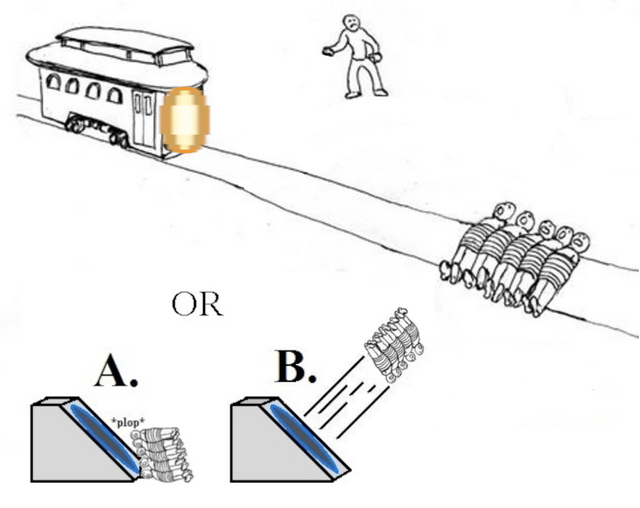this post was submitted on 18 Aug 2023
558 points (100.0% liked)
Memes
1357 readers
7 users here now
Rules:
- Be civil and nice.
- Try not to excessively repost, as a rule of thumb, wait at least 2 months to do it if you have to.
founded 5 years ago
MODERATORS
you are viewing a single comment's thread
view the rest of the comments
view the rest of the comments

Momentum is relative.
If you say the portal is stationary, and the person is moving then B makes sense. However, this is just changing the frame of reference from following the tram to following the person.
Changing the frame of reference (from tram to person, or from person to tram) doesn't change the velocity/momentum/energy (it's just the person is moving towards the tram or the tram is moving towards the person).
The acceleration the person would experience is likely similar to if the person just gets hit by the tram, however in Portals canon it is nonexistent.
Because, as you say, the person is accelerated. However, the acceleration when using the tram as the frame of reference is still 0 when you account for the rules of physics a portal would break. Even changing the direction of travel would be acceleration.
Like, if the in-portal and the out-portal were back-to-back where there was absolutely 0 distance between them, anything passing through the portal would experience 0 acceleration - no change in direction, it might as well be a standard hoola-hoop.
If the portals were side-by-side facing the same direction, anything passing through the portal would experience twice the acceleration of running into a wall - like bouncing a ball off a wall. Once going into the portal (forward motion) and once coming back (backwards motion), because the object has to completely reverse it's velocity.
And considering that things going into portals do not get damaged (and chel doesn't lose health) it's fair to consider that objects observe 0 acceleration.
But portals moving is outside of the Portals canon because it highlights that an object experiences acceleration when passing through a portal. And the acceleration is (or is near) instantaneous. And the object does not suffer from this.